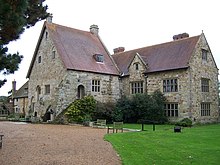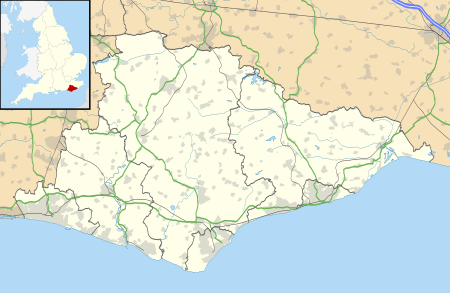
East Sussex is a ceremonial county in South East England. It is bordered by Kent to the north-east, West Sussex to the west, Surrey to the north-west, and the English Channel to the south. The largest settlement is the city of Brighton and Hove, and the county town is Lewes.
The county has an area of 1,792 km2 (692 sq mi) and a population of 822,947. The latter is largely concentrated along the coast, where the largest settlements are located: Brighton and Hove (277,105), Eastbourne (99,180), and Hastings (91,490). The centre and north of the county are largely rural, and the largest settlement is Crowborough (21,990). For local government purposes, East Sussex comprises a non-metropolitan county, with five districts, and the unitary authority of Brighton and Hove. East Sussex and West Sussex historically formed a single county, Sussex.
East Sussex is part of the historic county of Sussex, which has its roots in the ancient kingdom of the South Saxons, who established themselves there in the 5th century AD, after the departure of the Romans. Archaeological remains are plentiful, especially in the upland areas. The area's position on the coast has also meant that there were many invaders, including the Romans and later the Normans, following the defeat of the English army by William the Conqueror at the Battle of Hastings in 1066. Earlier industries included fishing, iron-making, and the wool trade, all of which have declined or been lost completely. (Full article...)
Selected article
Michelham Priory is the site of a former Augustinian Priory in Upper Dicker, East Sussex, England, United Kingdom. The surviving buildings are owned and administered by the Sussex Archaeological Society and are Grade I and Grade II listed.
A T-shaped stone-built structure, the east and north wings date from the 13th century and the west wing from the 16th century. The north wing, originally the Priors Lodging, comprises three storeys with an attic and the other two wings two storeys. The roof is tiled. The whole is surrounded by a moat, enclosing an area of almost 8 acres (3.2 ha).
A watermill in the grounds of the priory has been restored to working order and is open to the public. (Full article...)
Selected images
Selected biography
Donald Eric Partridge (27 October 1941 – 21 September 2010) was an English singer and songwriter, known as the "king of the buskers". He performed from the early 1960s first as a folk singer and later as a busker and one-man band, and achieved unexpected commercial success in the UK and Europe in the late 1960s with the songs "Rosie", "Blue Eyes" and "Breakfast on Pluto". He later was a founder of the group Accolade, which released two albums. He continued writing music, playing, busking and recording, mainly as a solo artist, until 2008. (Full article...)
Did you know that

Long Man of Wilmington is 227 feet (69 metres) tall and designed to look proportional when viewed from below
General images -
List articles

- List of hills of East Sussex
- List of local nature reserves in East Sussex
- List of monastic houses in East Sussex
- List of museums in East Sussex
- List of Parliamentary constituencies in East Sussex
- List of places in East Sussex
- List of settlements in East Sussex by population
- List of Sites of Special Scientific Interest in East Sussex
- List of windmills in East Sussex
Subcategories
Settlements map
Things you can do
- Add to this portal.
- Join the Sussex WikiProject
Topics
Related portals
Associated Wikimedia
The following Wikimedia Foundation sister projects provide more on this subject:
-
Commons
Free media repository -
Wikibooks
Free textbooks and manuals -
Wikidata
Free knowledge base -
Wikinews
Free-content news -
Wikiquote
Collection of quotations -
Wikisource
Free-content library -
Wikiversity
Free learning tools -
Wikivoyage
Free travel guide -
Wiktionary
Dictionary and thesaurus














































































